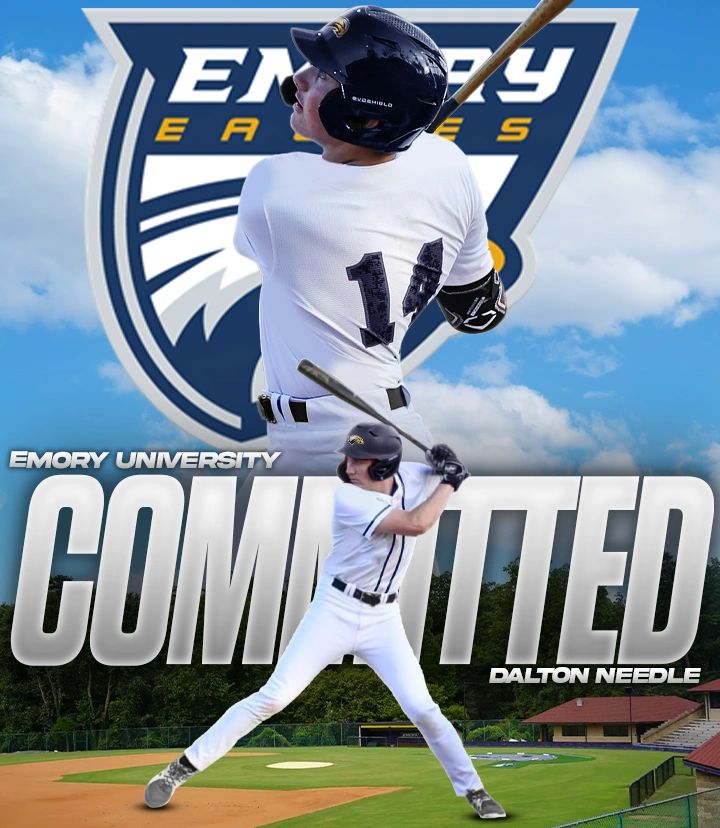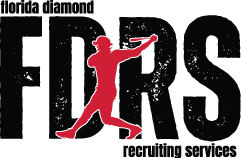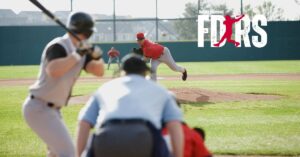📍Located in Fort Lauderdale, Florida

The end of the fall high school/travel season is coming to an end. The start of the school year has continued to bring a very fluid process with regard to the changing landscape of college baseball recruiting. So what does this mean for the 2025-2028 classes?
We will start with the 2025 senior class. For those that have not found a home and aspire to play at the collegiate, while time is short, there is still time. Hopefully there has been some dialogue/interaction with some schools of interest. Stating the obvious, now is the time to hone in on making a decision. We all know that college baseball has become harder to play (see previous blog posts) so as the old expression goes, “do not look a gift horse in the mouth.” For those that are still looking for that mutual interest, reevaluate where and what levels you have been targeting. More than likely, it is time to shift the focus geographically and/or the level of play. As someone who has seen EVERY level of collegiate play, including all three levels of junior college, I think most people will be surprised on how competitive all levels of college baseball have become. And they are only getting stronger moving forward. Additionally, at this stage in the game, with the focus clealry on the non-D1 level, a preferred walk on roster spot might be the right fit. Lastly, for those who enter their senior seasons with no firm landing spot, there is NO substitute for performance. You never know what may open up opportunity wise late in the spring. Once that transfer portal officially opens up June 2nd, an almost certain trickle down effect is bound to happen, as all levels that lose players will potentially have open roster spots at that point. The best way to be prepared for that is to continue/start some dialogue with the appropriate levels/schools, and PERFORM.
The 2026 class shares some commonalities with the 2025 class as far as a possible reshift/focus of the levels that are being targeted. A 2026 player that has had some meaningful dialogue with a school or schools should obviously continue with that. Like the 2025 class, if an offer is out there, more than likely, this is not the time to be contemplating, as long as the program passes the pros and cons litmus test for the player and family. For those who are still in search of some mutual interest, the aforementioned shift in targeted levels of play, may need to come into play. Position players more than ever, at the high school level, are finding it harder and harder to garnish real interest at the D1 levels. Consider other levels of play if there has not been much dialogue at your current targeted levels. And by targeted levels, what I mean by that, is the type of camps and/or showcases that you have been attending, along with whom you may be sending emails/videos to. Pitchers will always have a longer leash for potential opportunities. There is always a need for arms even at the highest levels. For both position players and pitchers, if possible, target some realistic college camps over the next few months. Programs will have camps as late as January prior to the start of their own spring seasons.

The 2027 class is approaching their first summer of being the main focus of colleges this coming summer. This summer, come August 1st, will be the first time that schools (D1) can have real initiated conversations and dialogue with the 2027 class, along with actual offers being made. Putting together a quality body of work this coming spring, along with attending a camp or two prior to the spring, will help with becoming a potential target for a school. Again, keeping in mind, are you targeting the correct potential levels of play? And when I say a potential target, I mean having a school come watch you play this summer. Occasionally, depending upon a variety of factors, they may be able to get out and see you play in March when off campus evaluations are once again permitted. The 2027 class should have a firm course of action mapped out not during the spring, but prior to the start of the spring. The development of young players is fluid, and the projections of players are the crystal ball everyone is trying to figure out. That includes college coaches as well. So having a target of a couple different levels will help prepare for the unknown in this whole process.
The 2028 class is at that the very beginning of the recruiting process. Most players will start their careers on the junior varsity level. While some may have the opportunities to begin on the varsity level. This is a time to potentially experience going to a college camp/showcase. It helps get a feel for what the level of competition is out there outside of your own local baseball community. As importantly, it exposes the young player to the process of what takes place in a college camp. Going through defensive drills, batting practice, possibly live game action, all with the staffs eyes on you. That experience alone is worth attending. So when the time comes the following year, when the focus of your evaluation has become more of a priority, having been through the process, a more relaxed approach should take place. This is no different then when major league clubs bring up a young minor league player to big league spring training. Yes they are there to be evaluated by the major league staff, but more importanly, or at least as importantly, it is about exposing the young prospect to the level of play, expectations, and overall environment. Because of how different it is today from a recruiting/exposure stance, it is NOT too early to start preparing and becoming properly educated about the process.
While the summations per class were fairly brief, they provide an outline of preparations and expectations. Keep in mind a few things. There is ZERO substitute for performance. While you as a player can’t control the level of play your opponents provide, production is non negotiable. Additionally, college baseball is a more physical game than ever. There is no substitute for physicality and overall strength. Those who put the work in the weight room in a quality strength and conditioning program will put themselves in the best position to help a college win baseball games. In its simplest form, college coaches are looking for players who can help their programs win games.
I will leave you with this last thought, and it is something that we have touched on before. The level of play that someone can play at the collegiate level is not solely determined by one factor. A coach, a hitting or pitching instructor, or a recruiting service will not determine the level of play that you will get potential opportunies to play at. Ultimately, the level chooses the player. Not vice versa. Recruiting, like drafting and signing players at the major league level, is full of mistakes. In the end, those mistakes will more often than not work themselves out.

What is critically needed today is getting sound advice and guidance at the beginning and throughout the process. Having the right people who have the experience at the games highest levels evaluate and project what level(s) to target is a critical component. In addition, with respect to what was just stated, the ability to not only tap into a network at any and all levels of collegiate baseball, but to also have the ability and credibility to breakdown the tools/skills and properly evaluate the player as a potential fit to a specific school and coaching staff. With fewer rostered opportunities at the D1 level beginning with the 2025-2026 school year, the result will without a doubt be playing at both the D1 and non D1 levels will and has become harder than ever before. Time is of the essence. Quality, competent evaluations, targeting the correct level(s) of play(which also includes what camps/showcases to both attend and not attend), having a quality network, credibility, along with a firm understanding of the fluid recruiting landscape, are more important than ever. Missing any of the above qualities in whomever is assisting in the process, will undoubtedly leave room for viable missed opportunities to continue playing at the collegiate level.




